Partial Computation Offloading for Double-RIS Assisted Multi-User Mobile Edge Computing Networks
-
摘要: 针对移动边缘计算(MEC)任务卸载性能易受障碍物阻挡影响的问题,该文提出一种双智能超表面(RIS) 赋能的移动边缘计算任务部分卸载框架。首先,分析两个RIS之间的反射对链路增益的影响。其次,联合考虑终端用户的发射功率、终端用户的卸载速率、任务卸载量、卸载时间的分配以及RIS相移约束,旨在建立一个能耗最小化优化问题。最后,采用交替迭代算法,将原非凸问题分解为两个子问题,并利用Dinkelbach方法和最优性条件进行求解。仿真结果验证了所提算法的快速收敛特性以及在降低系统能耗方面的有效性。Abstract: In order to compensate the performance loss caused by obstacle blocking in Mobile Edge Computing (MEC) system, a partial task offloading framework supported by Reconfigurable Intelligent Surface (RIS) is proposed. Firstly, the influence of the reflection between double-RIS on channel gain is analyzed. Then, a non-convex and multivariable coupling problem for minimization of total energy consumption of all users is formulated by the joint design of the transmit power of users, the offloading rate of users, the amount of offloading task of users, the time slot and the phase shift of RISs. To solve this problem, the alternating optimization technique is invoked to decouple the original non-convex problem into two subproblems which are solved by leveraging the Dinkelbach method and optimally conditions. Numerical results demonstrate that the proposed algorithm converges swiftly and reduces effectively the system energy consumption.
-
表 1 交替优化算法(算法1)
输入:初始化$\left( {{\mathbf{v}}_1^k,{\mathbf{v}}_2^k,{{\mathbf{w}}_k},{p_k},{l_k},{t_k}} \right)$ 步骤1:for $i = 1:{I_0}$ 根据式(11)计算${\mathbf{v}}_2^k$; 根据式(13)计算${\mathbf{v}}_1^k$; 根据式(14)计算${{\mathbf{w}}_k}$; 步骤2:for $i = 1:{I_1}$ 根据式(17)计算${p_k}$; 根据定理2计算${l_k}$; 更新${\eta ^{(i)}} = {\log _2}\left( {1 + p_k^{(i)}{a_k}} \right)/p_k^{(i)}$; 更新$t_k^{(i)} = ({L_k} - l_k^{(i)})/R_k^{(i)}$; 步骤3:输出$\left( {{\mathbf{v}}_1^k,{\mathbf{v}}_2^k,{{\mathbf{w}}_k},{p_k},{l_k},{t_k}} \right)$。 -
[1] WU Qingqing and ZHANG Rui. Towards smart and reconfigurable environment: Intelligent reflecting surface aided wireless network[J]. IEEE Communications Magazine, 2020, 58(1): 106–112. doi: 10.1109/MCOM.001.1900107 [2] 徐勇军, 高正念, 王茜竹, 等. 基于智能反射面辅助的无线供电通信网络鲁棒能效最大化算法[J]. 电子与信息学报, 待发表. doi: 10.11999/JEIT210714.XU Yongjun, GAO Zhengnian, WANG Qianzhu, et al. . Robust energy efficiency maximization algorithm for intelligent reflecting surface-aided wireless powered-communication networks[J]. Journal of Electronics & Information Technology, To be published. doi: 10.11999/JEIT210714. [3] WU Qingqing, ZHANG Shuowen, ZHENG Beixiong, et al. Intelligent reflecting surface-aided wireless communications: A tutorial[J]. IEEE Transactions on Communications, 2021, 69(5): 3313–3351. doi: 10.1109/TCOMM.2021.3051897 [4] LIU Yuanwei, LIU Xiao, MU Xidong, et al. Reconfigurable intelligent surfaces: Principles and opportunities[J]. IEEE Communications Surveys & Tutorials, 2021, 23(3): 1546–1577. doi: 10.1109/COMST.2021.3077737 [5] XU Yongjun, GUI Guan, GACANIN H, et al. A survey on resource allocation for 5G heterogeneous networks: Current research, future trends, and challenges[J]. IEEE Communications Surveys & Tutorials, 2021, 23(2): 668–695. doi: 10.1109/COMST.2021.3059896 [6] MAO Yuyi, YOU Changsheng, ZHANG Jun, et al. A survey on mobile edge computing: The communication perspective[J]. IEEE Communications Surveys & Tutorials, 2017, 19(4): 2322–2358. doi: 10.1109/COMST.2017.2745201 [7] CAO Xuelin, YANG Bo, HUANG Chongwen, et al. Converged reconfigurable intelligent surface and mobile edge computing for space information networks[J]. IEEE Network, 2021, 35(4): 42–48. doi: 10.1109/MNET.011.2100049 [8] HUANG Chongwen, ZAPPONE A, ALEXANDROPOULOS G C, et al. Reconfigurable intelligent surfaces for energy efficiency in wireless communication[J]. IEEE Transactions on Wireless Communications, 2019, 18(8): 4157–4170. doi: 10.1109/TWC.2019.2922609 [9] 刘期烈, 杨建红, 徐勇军, 等. 面向安全通信的智能反射面网络能效优化算法[J]. 电讯技术, 2020, 60(12): 1391–1397. doi: 10.3969/j.issn.1001-893x.2020.12.001LIU Qilie, YANG Jianhong, XU Yongjun, et al. An energy-efficient optimization algorithm for secure-based intelligent reflecting surface networks[J]. Telecommunication Engineering, 2020, 60(12): 1391–1397. doi: 10.3969/j.issn.1001-893x.2020.12.001 [10] YANG Zhaohui, CHEN Mingzhe, SAAD W, et al. Energy-efficient wireless communications with distributed reconfigurable intelligent surfaces[J]. IEEE Transactions on Wireless Communications, 2022, 21(1): 665–679. doi: 10.1109/TWC.2021.3098632 [11] YU Xianghao, XU Dongfang, SUN Ying, et al. Robust and secure wireless communications via intelligent reflecting surfaces[J]. IEEE Journal on Selected Areas in Communications, 2020, 38(11): 2637–2652. doi: 10.1109/JSAC.2020.3007043 [12] BAI Tong, PAN Cunhua, DENG Yansha, et al. Latency minimization for intelligent reflecting surface aided mobile edge computing[J]. IEEE Journal on Selected Areas in Communications, 2020, 38(11): 2666–2682. doi: 10.1109/JSAC.2020.3007035 [13] CHU Zheng, XIAO Pei, SHOJAFAR M, et al. Intelligent reflecting surface assisted mobile edge computing for internet of things[J]. IEEE Wireless Communications Letters, 2021, 10(3): 619–623. doi: 10.1109/LWC.2020.3040607 [14] WANG Qun, ZHOU Fuhui, HU Han, et al. Energy-efficient design for IRS-assisted MEC networks with NOMA[C]. 2021 13th International Conference on Wireless Communications and Signal Processing (WCSP), Changsha, China, 2021: 1–6. [15] LI Zhiyang, CHEN Ming, YANG Zhaohui, et al. Energy efficient reconfigurable intelligent surface enabled mobile edge computing networks with NOMA[J]. IEEE Transactions on Cognitive Communications and Networking, 2021, 7(2): 427–440. doi: 10.1109/TCCN.2021.3068750 [16] LI Baogang, WU Wenjing, LI Yonghui, et al. Intelligent reflecting surface and artificial noise assisted secure transmission of MEC system[J/OL]. IEEE Internet of Things Journal, 2021: 1–12. [17] NI Wanli, LIU Yuanwei, YANG Zhaohui, et al. Federated learning in multi-RIS aided systems[J]. IEEE Internet of Things Journal, 2022, 9(12): 9608–9624. doi: 10.1109/JIOT.2021.3130444 [18] HUANG Shanfeng, WANG Shuai, WANG Rui, et al. Reconfigurable intelligent surface assisted mobile edge computing with heterogeneous learning tasks[J]. IEEE Transactions on Cognitive Communications and Networking, 2021, 7(2): 369–382. doi: 10.1109/TCCN.2021.3056707 [19] HAN Yitao, ZHANG Shuowen, DUAN Lingjie, et al. Cooperative double-IRS aided communication: Beamforming design and power scaling[J]. IEEE Wireless Communications Letters, 2020, 9(8): 1206–1210. doi: 10.1109/LWC.2020.2986290 [20] ZHENG Beixiong, YOU Changsheng, and ZHANG Rui. Double-IRS assisted multi-user MIMO: Cooperative passive beamforming design[J]. IEEE Transactions on Wireless Communications, 2021, 20(7): 4513–4526. doi: 10.1109/TWC.2021.3059945 [21] WANG Feng, XU Jie, and CUI Shuguang. Optimal energy allocation and task offloading policy for wireless powered mobile edge computing systems[J]. IEEE Transactions on Wireless Communications, 2020, 19(4): 2443–2459. doi: 10.1109/TWC.2020.2964765 -





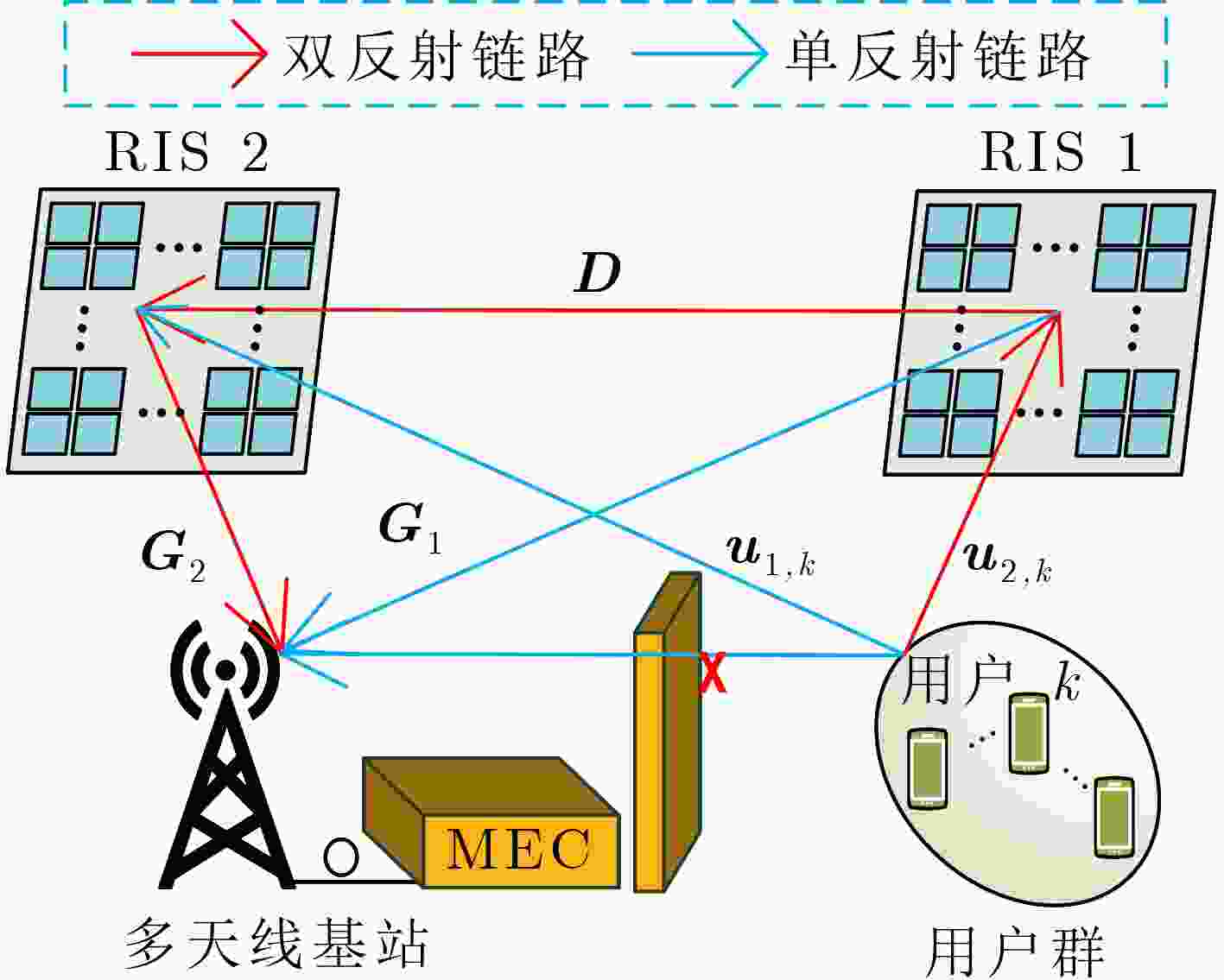
 下载:
下载:
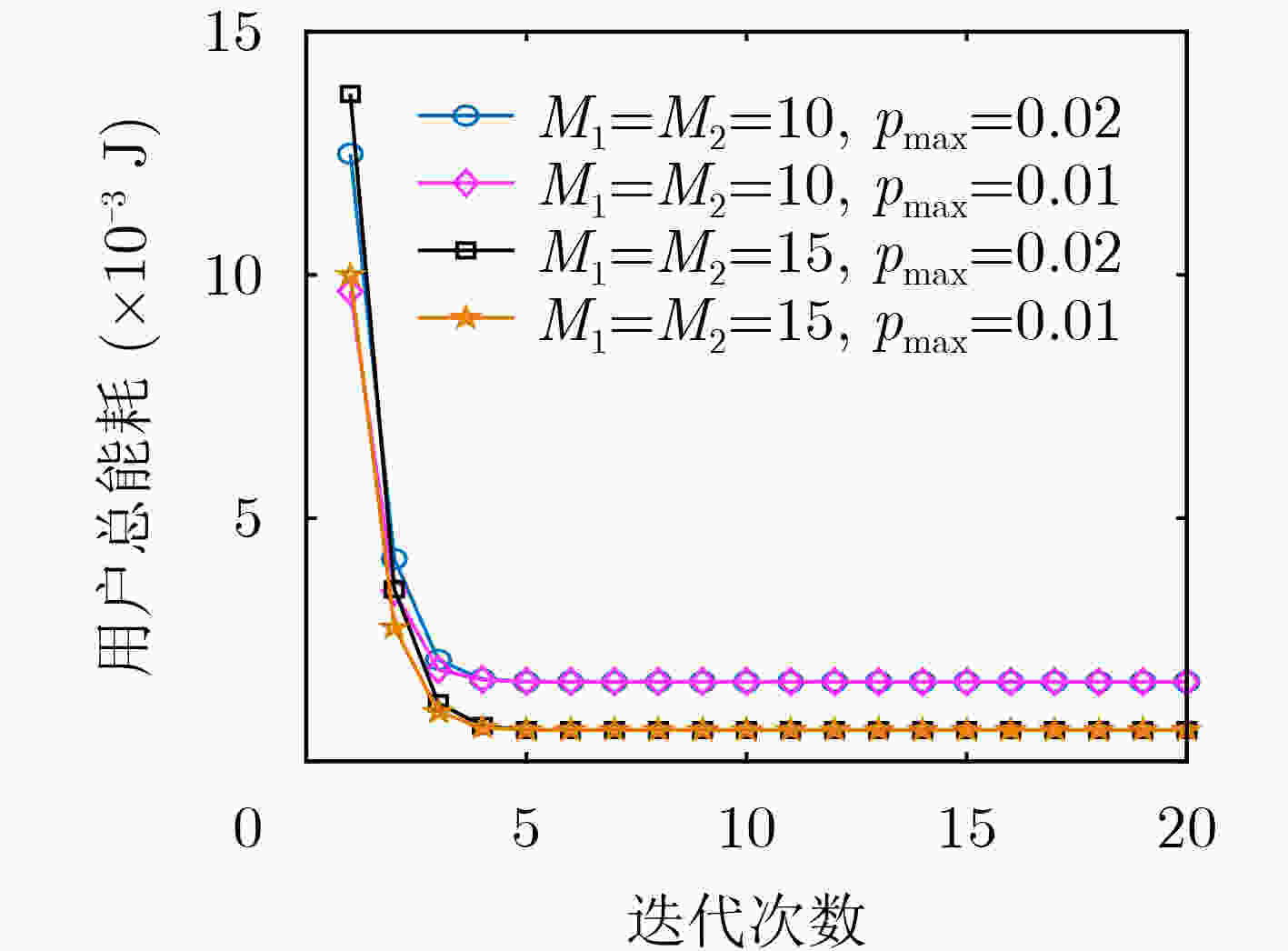
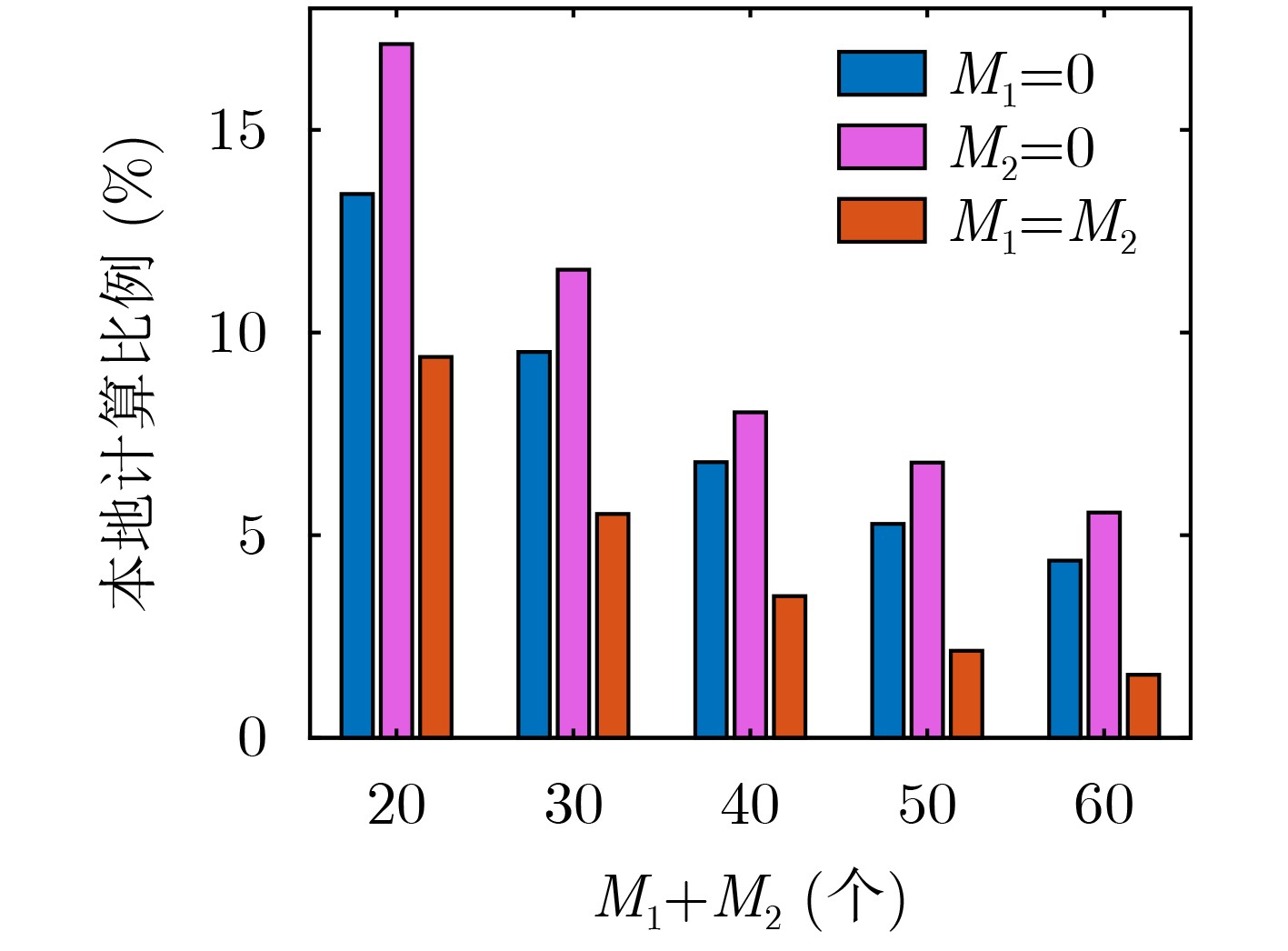
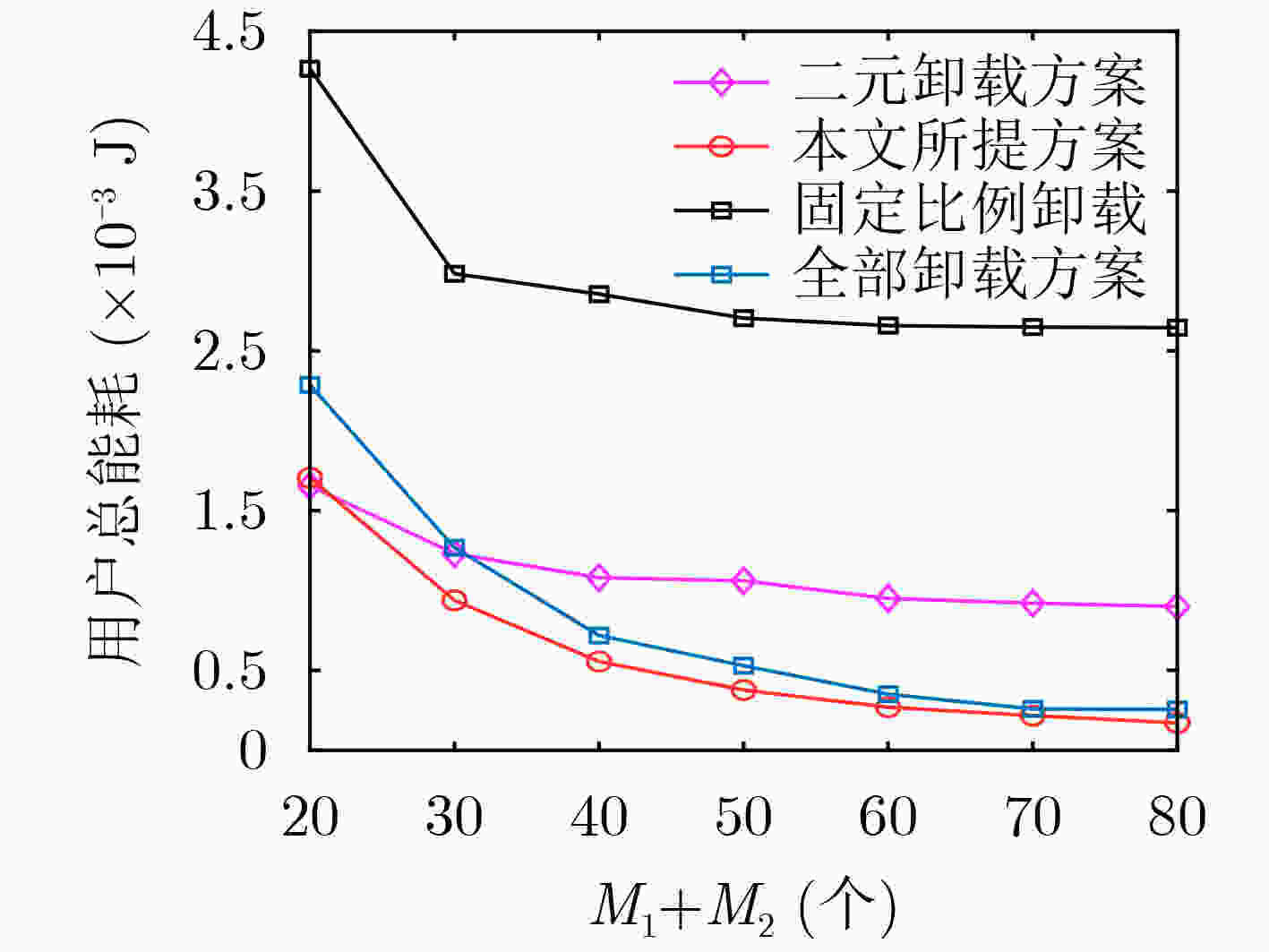
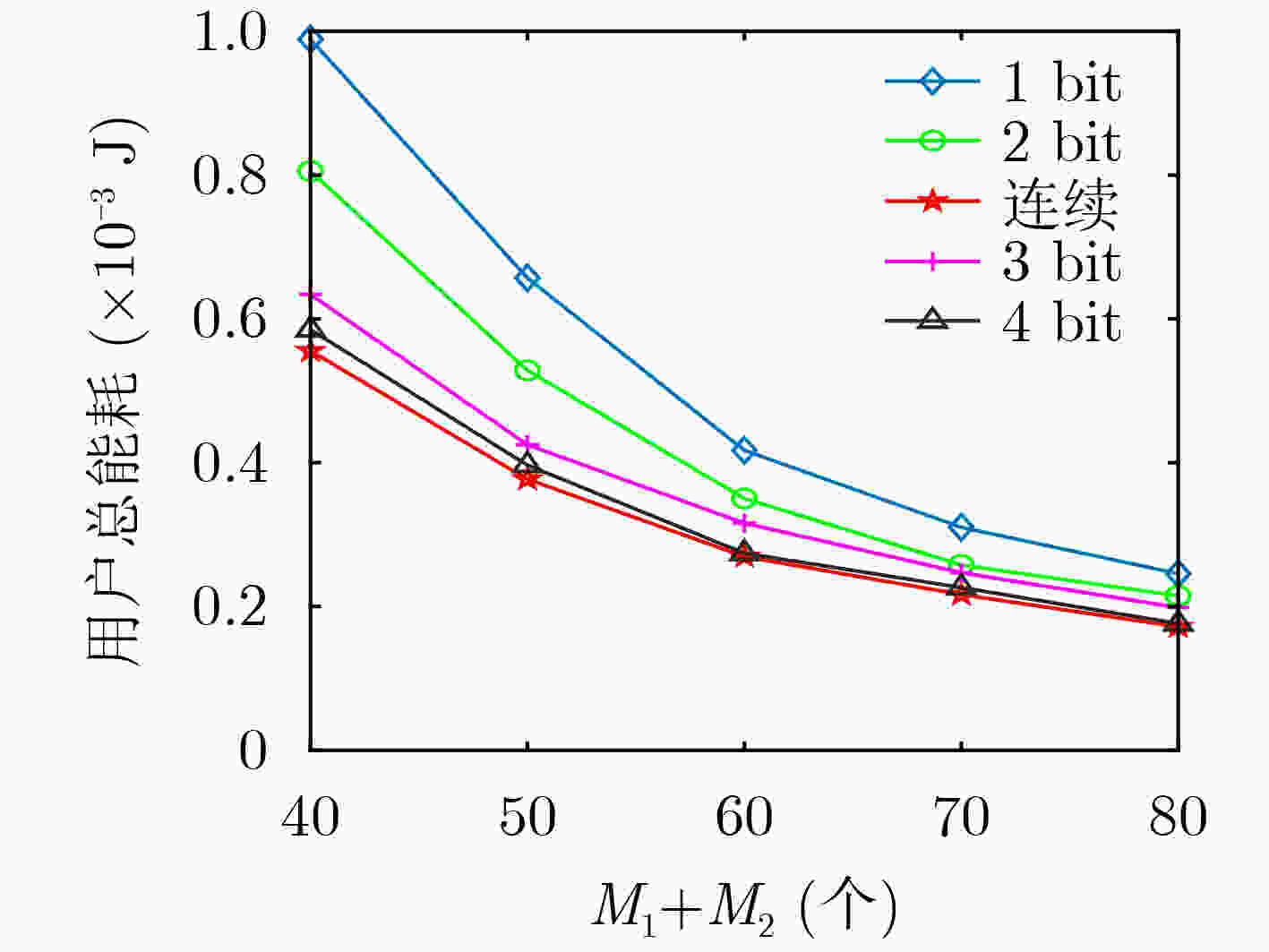


 下载:
下载:
